What Are Air Cooler Cooling Pads?
Air cooler cooling pads are essential components designed to enhance the cooling efficiency of evaporative coolers, commonly known as swamp coolers. These pads serve as the primary medium through which heated air is cooled, leveraging the natural process of evaporation to provide a refreshing indoor environment. Typically made from materials such as cellulose, aspen wood, or synthetic fibers, air cooler cooling pads are structured to maximize surface area, allowing for better absorption of water and effective evaporation.
The functioning of cooling pads hinges on their ability to promote the evaporation of water, which occurs when hot air passes through them. As the hot air travels through the wet pads, the water evaporates, drawing heat from the air and resulting in a cooler outlet temperature. This process significantly enhances the airflow within an air cooler, making it more efficient in hot, arid climates where humidity levels are low. The effectiveness of cooling pads can be influenced by several factors, including their thickness and density, which affect both the water retention and the rate of evaporation.
There are various types of air cooler cooling pads available on the market, each suited for specific applications and environmental conditions. For instance, cellulose cooling pads are popular for their high absorption capacity and durability, while aspen pads are often chosen for their affordability and efficient cooling capabilities. Synthetic pads, on the other hand, are engineered to resist clogging and facilitate easier cleaning, making them a favorable choice for maintenance-conscious users. Understanding the different materials and designs of cooling pads can help consumers select the most suitable option for their air cooling needs and climate scenarios.
Benefits of Using Cooling Pads in Air Coolers
Air cooler cooling pads serve as a fundamental component in enhancing the cooling efficiency of evaporative coolers. One of the primary benefits of using these pads is their ability to improve cooling performance significantly. When warm air passes through the saturated cooling pads, the evaporation process extracts heat, resulting in cooler air being circulated into the living space. This process not only ensures a lower ambient temperature but also promotes a comfortable indoor environment, particularly during hot and dry weather.
In addition to performance enhancements, air cooler cooling pads are known for their energy efficiency. Compared to traditional air conditioning systems, air coolers powered by cooling pads consume significantly less electricity. This translates into lower energy bills, making them an economically viable option for cooling homes and offices. The reduced energy consumption also contributes positively to environmental sustainability by decreasing the carbon footprint associated with excessive power usage.
The cost-effectiveness of cooling pads further reinforces their appeal. These pads are generally more affordable than many other cooling solutions, and their longevity means they do not require frequent replacements. Regular maintenance can extend their lifespan, making them a worthwhile investment for households seeking reliable cooling solutions. Additionally, using air cooler cooling pads may provide health benefits by improving indoor air quality. As the pads absorb moisture, they help regulate humidity levels within the home, ensuring that the air is not overly dry. This humidity regulation is crucial for respiratory health and can alleviate issues such as dry skin and irritations.
Overall, integrating cooling pads into air coolers offers numerous advantages, from enhanced cooling performance to improved energy efficiency and healthier indoor environments. As such, they represent a smart choice for those looking to maintain comfortable and cost-effective living conditions throughout the warmer months.
Factors to Consider When Choosing Cooling Pads
Choosing the right cooling pads for air coolers is essential to ensure optimal performance and efficiency. One of the primary factors to consider is the material type used in the cooling pads. The most common materials are cellulose and aspen. Cellulose pads are known for their higher evaporation efficiency and longer lifespan, while aspen pads are more affordable but might require more frequent replacement. Your choice may depend on the climate in which the air cooler operates, as moisture levels play a pivotal role in cooling performance.
Another critical aspect to consider is the thickness of the cooling pads. Thicker pads typically offer superior evaporation rates, leading to better cooling effects. However, thicker pads can also increase airflow resistance, which might affect the overall efficiency of the air cooler. Therefore, finding the right balance between thickness and airflow is crucial for enhanced cooling performance while avoiding unnecessary strain on the unit.
Size and compatibility with specific air cooler models cannot be overlooked. It’s important to measure the dimensions of the cooling pad compartment in your air cooler to ensure a proper fit. Selecting a pad that is incompatible can lead to reduced cooling efficiency and potential damage. Additionally, evaluating durability and maintenance needs is paramount. Look for pads that are easy to clean and require minimal maintenance to prolong their life. Efficiency ratings are also essential; high-quality cooling pads will often display performance metrics, such as the cooling efficiency and water retention capabilities. Understanding these factors will help you select the best cooling pads, which is vital for effective air cooling solutions in varied climates.
Installation and Maintenance Tips for Cooling Pads
Installing and maintaining cooling pads in air coolers is crucial for optimal performance and longevity. To begin, gather the essential tools required for the installation process: a screwdriver, scissors, and a measuring tape. If the cooling pads are detachable, refer to the manufacturer’s manual for specific guidelines tailored to your air cooler model.
The installation process involves several key steps. First, ensure the air cooler is unplugged to avoid any electrical hazards. Carefully remove the front panel by unscrewing the fasteners. Once the panel is detached, take out the old cooling pads with caution. It is important to check whether they are dry and brittle, as this indicates it is time for replacement. Measure the dimensions of the cooling pad compartment using the measuring tape to procure the appropriate size. New pads are generally available in various materials, including cellulose, aspen, or synthetic fibers. Selecting high-quality pads ensures better water retention and cooling efficiency.
When positioning the new cooling pads, ensure they fit snugly into the compartment without gaps. A proper fit is vital as air should pass through the pads efficiently to maximize cooling. After placing the pads, reattach the front panel securely and plug in the air cooler. Test the unit to confirm that it operates smoothly and effectively.
Regular maintenance is essential for extending the life of your cooling pads. It is recommended to clean the pads every two weeks during peak use months. A simple rinse under running water is often sufficient, although using a mild soap can be beneficial for removing stubborn grime. Additionally, replace the cooling pads at least once a season or when you notice diminished airflow. Implementing these installation and maintenance tips will ensure optimal performance and prolong the effectiveness of your air cooler’s cooling pads.
Common Problems and Troubleshooting for Cooling Pads
Air cooler cooling pads are essential components that aid in enhancing the cooling efficiency of evaporative coolers. However, users may sometimes face challenges that can hinder optimal operation. One common issue is reduced cooling efficiency. This problem can arise from the accumulation of dirt and debris on the pads, which prevents proper water absorption. Regular cleaning of the cooling pads and the cooler unit can significantly alleviate this issue. Users should ensure that the pads are cleaned with a mild detergent and rinsed thoroughly to maintain their functionality.
Another frequent concern is clogging. This situation usually occurs when mineral deposits build up on the cooling pads, especially in areas with hard water. Regular maintenance practices such as periodic replacement of the pads and using water softeners can help prevent this situation. If clogging persists, soaking the pads in a solution of vinegar and water can assist in breaking down the mineral deposits, restoring the efficiency of the pads.
Odors can also develop if stagnant water accumulates within the cooler or if the pads become moldy. To combat this issue, it is advisable to ensure that water does not remain stagnant for extended periods. Changing the water regularly and allowing the pads to dry completely when not in use can effectively prevent unpleasant smells. In some cases, the pads may need to be replaced entirely if odors persist despite cleaning attempts.
When dealing with these common problems, users should not hesitate to seek professional assistance if DIY solutions do not yield the desired results. A certified technician can provide insights into more severe issues that may require specialized attention. Additionally, to prevent these complications from arising in the first place, implementing a regular maintenance schedule for the air cooler is paramount.
| Air Cooler Brand Name | Aisen, Arctic, Bajaj, Blue Star, Blueberry, Butterfly, Candes, Cello, Cospex, Croma, Crompton, Crompton Greaves, Cruiser, CRUISER C.S.O., Daenyx, Godrej, Greenchef, HAVAI, Havells, Hindware, Hindware Snowcrest, Impex, Intex, Kelvinator, Kenstar, Khaitan, Krish, Lazer, Lifelong, Livpure, Maharaja Whiteline, Mccoy, Onida, Orient, Pigeon, Polycab, Power Guard, Raptas, Sansui, Singer, Sunflame, Symphony, T-Series, Thomson, Usha, V-Guard, Varna, Vego, Venus, Voltas, Wybor |
|---|---|
| Air Cooler Capacity | 21 to 60 liters, 40 to 80 liters, 60 to 85 liters, Below 20 liters |
| Air Cooler Type | Desert, Personal, Room, Tower, Window |
| Technician Type | With Technician, Without Technician |
Only logged in customers who have purchased this product may leave a review.
Related products
-
Air Cooler Parts
Air Cooler Fan Blade
₹520.00 – ₹1,120.00 Select options This product has multiple variants. The options may be chosen on the product pageRated 0 out of 5 -
Air Cooler Parts
Air Cooler Remote Control
₹650.00 – ₹1,250.00 Select options This product has multiple variants. The options may be chosen on the product pageRated 0 out of 5 -
Air Cooler Parts
Air Cooler Speed Control Knob
₹390.00 – ₹990.00 Select options This product has multiple variants. The options may be chosen on the product pageRated 0 out of 5 -
Air Cooler Parts
Air Cooler Water Tank
₹1,950.00 – ₹2,550.00 Select options This product has multiple variants. The options may be chosen on the product pageRated 0 out of 5

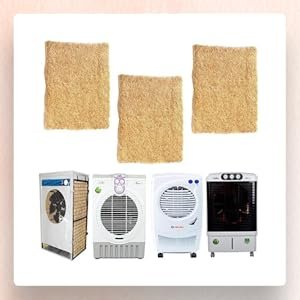
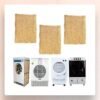
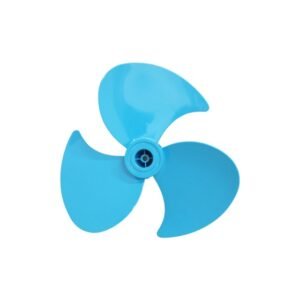
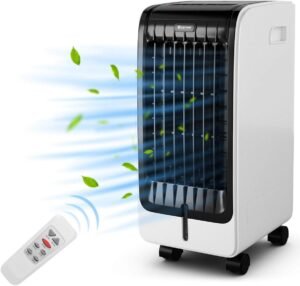
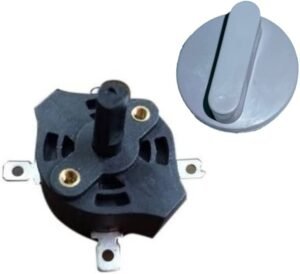
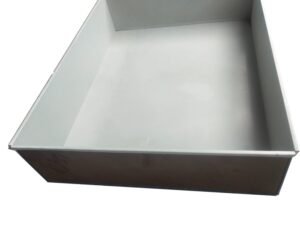
Reviews
There are no reviews yet.